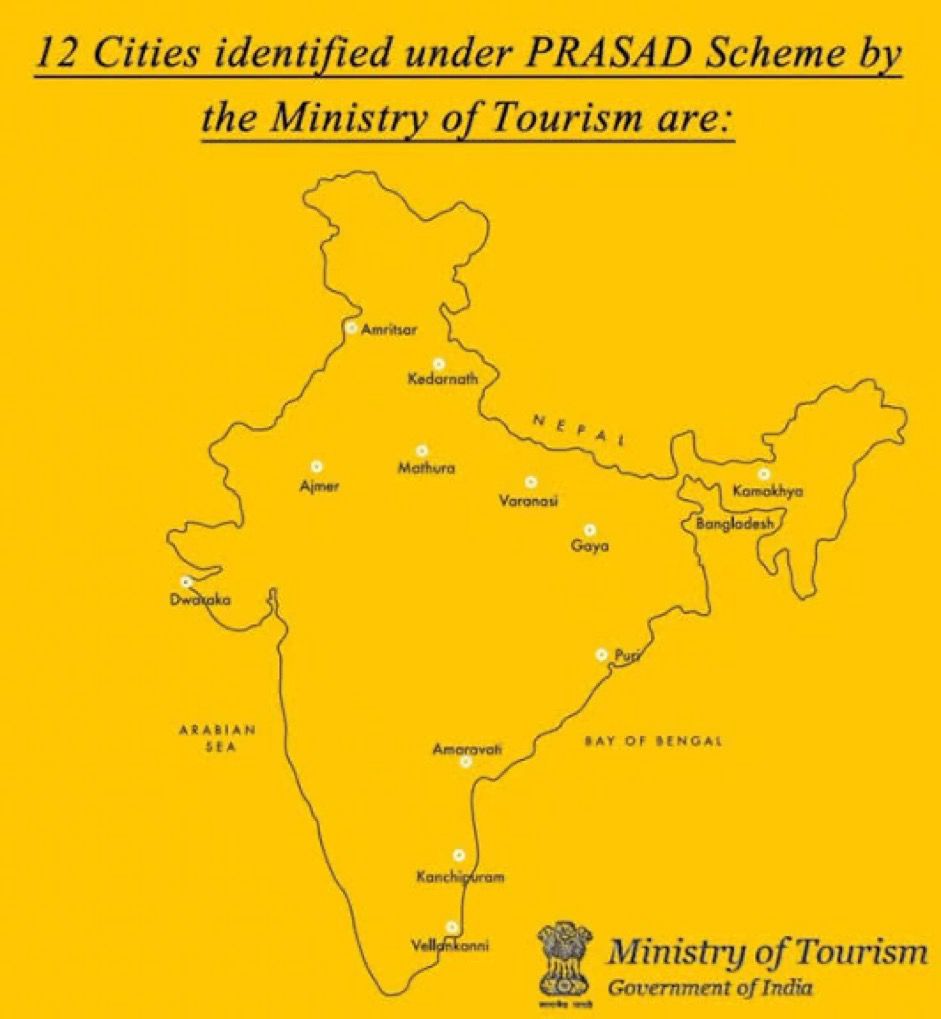🟠The Indian government has undertaken a comprehensive mission to revamp pilgrimage centers across the country, aiming to enhance the convenience and experience of pilgrims while promoting religious tourism.
🟠This mission is being implemented through a planned series of schemes and projects, encompassing various aspects of infrastructure development, beautification, and cultural preservation.
🟠Key Schemes and Projects:
👉National Mission on Pilgrimage Rejuvenation and Spiritual Augmentation Drive (PRASHAD): This flagship scheme focuses on the holistic development of pilgrimage sites, including infrastructure upgrades, heritage conservation, and promotion of local crafts and cuisine.
👉Swadesh Darshan 2.0: This scheme prioritizes the development of sustainable and responsible tourism destinations, incorporating eco-friendly practices and local community engagement.
👉Pilgrimage Circuit Development: The government is actively developing thematic pilgrimage circuits, such as the Ramayana Circuit, Shakti Peeth Circuit, and Buddhist Circuit, to streamline travel and enhance the overall experience.
👉Heritage Conservation: A significant focus lies on the preservation and restoration of historical and cultural monuments at pilgrimage sites, ensuring their enduring significance.
👉nfrastructure Development: Infrastructural improvements include road connectivity, parking facilities, sanitation, and accommodation options to cater to the growing influx of pilgrims
🟠Potential Impacts
🟠Positive Impacts
👉Economic Growth: Improved tourism infrastructure and increased pilgrim visits can boost local economies, generating employment opportunities and stimulating businesses.
👉Cultural Preservation: Revamping pilgrimage centers can revitalize cultural heritage, promoting traditional arts, crafts, and cuisine, and fostering a sense of pride among local communities.
👉Social Harmony: Pilgrimage tourism can strengthen inter-faith dialogue and promote understanding of diverse cultures, fostering social cohesion.
👉Infrastructure Advancement: Modernization of infrastructure can enhance accessibility and improve the overall experience for pilgrims, especially those from disadvantaged backgrounds.
👉International Recognition: India’s rich pilgrimage heritage can be showcased to the world, attracting international tourists and boosting India’s standing as a spiritual tourism destination.
🟠Potential Negative Impacts
👉Environmental Concerns: Mass tourism can strain local ecosystems, leading to increased waste generation, water pollution, and potential damage to fragile natural habitats.
👉Commercialization: Over-commercialization of pilgrimage sites can overshadow their spiritual significance and exploit the sentiments of pilgrims.
👉Cultural Disruption: Rapid development can disrupt traditional practices and lifestyles of local communities, potentially leading to cultural homogenization and loss of local identity.
👉Infrastructural Strain: Unplanned and excessive infrastructure development can strain existing resources and lead to congestion, noise pollution, and disruption of the local environment.
👉Social Tensions: Increased tourism and commercial activities can lead to social tensions and conflicts, particularly over land use, resource allocation, and cultural preservation.
🟠Mitigating Negative Impacts
👉Sustainable Tourism Practices: Incorporate eco-friendly measures, waste management strategies, and responsible tourism initiatives to minimize environmental impact.
👉Community Engagement: Involve local communities in decision-making processes and provide opportunities for their economic empowerment through sustainable tourism.
👉Cultural Sensitivity: Respect local traditions and practices, and promote responsible tourism behavior among visitors to preserve cultural integrity.
👉Holistic Planning: Ensure that development plans are comprehensive and consider the long-term impact on the environment, local communities, and cultural heritage.
👉Monitoring and Evaluation: Continuously monitor the impacts of tourism projects and adapt strategies to address any negative consequences promptly
🟠In conclusion, the government’s mission to revamp pilgrimage centers in India presents a promising opportunity to enhance the spiritual tourism experience and foster economic growth.
🟠However, it is crucial to prioritize sustainable practices, cultural sensitivity, and community engagement to mitigate potential negative impacts and ensure that the benefits of tourism are shared equitably.
🟠By striking a balance between development and preservation, India can establish itself as a model for sustainable and responsible pilgrimage tourism